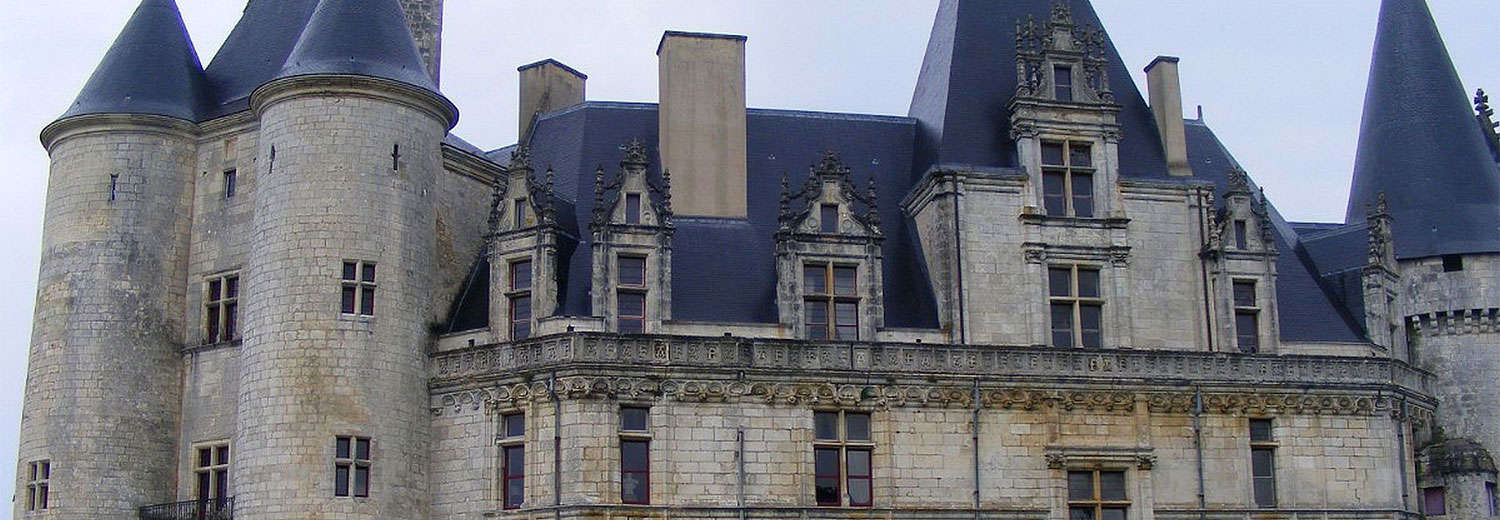GET A QUICK, FREE QUOTE
Rated 'Excellent'
on Trustpilot
ECMT International
Removals Permit
British Association
of Removers
Eco Friendly
Removals
Our Removals Service Includes…
For removals to and from Montbron.
Call Now 0808 175 1966
Montbron
A town which has bounced back from ruin after adoption by luxury brand
The town of Montbron, in the Charente Department has a sad tale to tell in recent times – but it is rising like a phoenix from the ashes after the uber cool brand Hermès moved in.
A former mayor had this to say: “Montbron, in Charentes, has endured two catastrophic decades. The unemployment rate reached 15% in the late 1990s. Young people moved away, houses and shops stood empty, and the school lost a class every four years. It was becoming a dormitory town for Angoulême. The 300 jobs created since the opening of the Hermès Tardoire manufacture replaced those that were lost. Not all our problems are resolved, but hope is returning.”
Montbron was once a bustling town, enlivened by the textile and felt industries.
At its peak, the Bricq factory employed 400 people, compared to around 60 today, who now work in textiles for industrial use. Just one slipper manufacturer, DM Production, has survived.
The downgrading of these industries was catastrophic for Montbron – young people moved out of town, and the population dropped like a stone.
It was such a shame for young people to move out of this lovely place, where the River Tardoire glitters through the fields, watched by Limousin cattle.
But since the opening of the Hermès leather workshop, which created over 250 jobs, families have been moving back in, a nursery class has reopened and community activities have resumed.
The town stretches over a wide area, with many hamlets, including Neuville, Chez Joubert, Vergnas, Chaises, Puybon, Courtillas, Lavaud, Grignol on the road to Angoulême, Chez Marvaud, Panisson, les Brousses and Chez Vincent.
Montbron is on the first limestone hill of the Aquitaine Basin at an altitude of 140m, descending from Limousin on crystalline and metamorphic rocks.
To the north going towards Montembœuf is the massif de l’Arbre, which culminates at a towering 353m.
Oak and chestnut trees jostle for space alongside fields of cereals, rapeseed, sunflowers and vines in the Tardoire valley. Towards the centre there is colour and life too – in 2017, the town was awarded a flower by the National Council of towns and villages in bloom in France.
Montbron has just over 2,000 residents, bolstered by the luxury leather goods turned out by Hermès there since 2012. The firm opened a new 5,500 m2 premises in 2015.
Elsewhere in the town it is clear people have loved to live here for many years. There are many, many churches and chateaux – even a Paleolithic cave.
The Barbican was once the main entrance to the walled city. The Barbacane ramp which starts from the Old Castle and descends to the “lower town” was revamped in 2004.
The Renaudie Valley Regional Nature Reserve is partly in the town’s boundaries and the GR 4 hiking trail from Royan to Grasse crosses the town.
History of Montbron
Montbron has several castles – The Castle of Montbron (or Old Castle) was built in the 15th century, around 1480, shortly after the Hundred Years War, under the authority of Marguerite de Rohan, Countess of Angouleme. It has a spiral staircase in a polygonal tower.
The castle Chabrot, an elegant construction of the 15th century and altered in the 17th century, is a house with turrets and a two-level gallery on a portion of the facade.
The Château de Ferrières has three wings around an open courtyard and the Menet castle has three towers, one at the centre of its façade.
You can actually stay in a couple of the chateaux! The Château de Sainte-Catherine is composed of an old dwelling framed by two pavilions and is now a hotel. The Château de Lavaud, on the edge of the Tardoire, is now converted into guest rooms.
There is also the 18th century Castle Marendat and the castle of Montgaudier overlooks the eponymous cave.
Montbron has been inhabited since prehistoric times as evidenced by the skull found here, now at the Musée de l’Homme in Paris – as well as various human bones and artefacts found in the Montgaudier cave, on show in the Musée du Vieux.
At the Fontéchevade cave on the edge of Orgedeuil, some vestiges of the La Tène III period were also found.
A vestige of a Roman villa was also found on the plateau between Lavaud and Courtillas.
According to the chronicle of Aymar de Chabanais, the first lords of Montbron were warriors. These lords succumbed to the murderous war waged by Waïfre, Duke of Aquitaine, to maintain his independence.
During the Middle Ages, Montbron was on a secondary east-west route frequented by pilgrims who went to the sanctuary of Santiago de Compostela and to the relics of Saint Eutrope at Saintes. Numerous epidemics and particularly leprosy killed many people, as evidenced by the Chapel of the Lepers.
The powerful barons protected the town of Montbron by a wall enclosure flanked by towers and pierced by five doors: the doors of Cahue, Prestin, Fer, de la Fontaine and Brébines 19.
After Marguerite de Rohan, the barony of Montbron passed into the hands of Louise de Savoie. In 1526, this land was incorporated as a dowry to his niece, Madeleine de Savoie, who married the Constable Anne de Montmorency, thus passing into the house of Montmorency 17.
Removals service
Whatever your removal needs we can handle it – we’ve been moving people for nearly 50 years and know how to deal with any situation.
We are fully insured and have a great team to help reduce the stress of moving.
You can call us on 0800 917 1015 or email enquiries@armishaws.com for a quote.
Allow us to move you to or from anywhere in the UK or Europe. Our staff have been well trained in all aspects of moving homes and businesses.
Armishaws has held the BSEN 12522 certificate since 1999.
Why Choose Armishaws
- Any distance
- Any amount
- Global shipping
- Removals to France, Spain and Portugal
- Storage facilities
- Export wrapping and packing service,
- Family-owned since 1973
- Free survey and a same-day quote
Armishaws has depots all over the country, having taken over many other removals firms. While they have all kept their own branding, you can tell it’s an Armishaws company by the stellar service!
For Free Advice and a Quotation call 0800 917 1015
Why move to Montbron?
These days, Montbron benefits from a lively economy while having all the benefits of a peaceful and beautiful environment.
Properties in Montbron
View properties for sale in Montbron.
Transport Links
Montbron is 15 miles east of Angouleme, a mile north-west of the Dordogne and six miles south-west of Haute-Vienne.
Montbron is also six from La Rochefoucauldten miles from Nontron, 20 miles from Confolens, 27 miles from Périgueux and 30 miles from Limoges.
The main roads are the D 699 (Angoulême to Limoges via Saint-Mathieu), the D 16 (Confolens to Montmoreau via La Péruse, Marthon and Villebois-Lavalette) and the D 6 (Mansle, La Rochefoucauld, Montbron, and goes towards Piégut -Plovers, named D 91 in Dordogne).
Schools near Montbron
Montbron has a secondary school, a primary school and a kindergarten.














